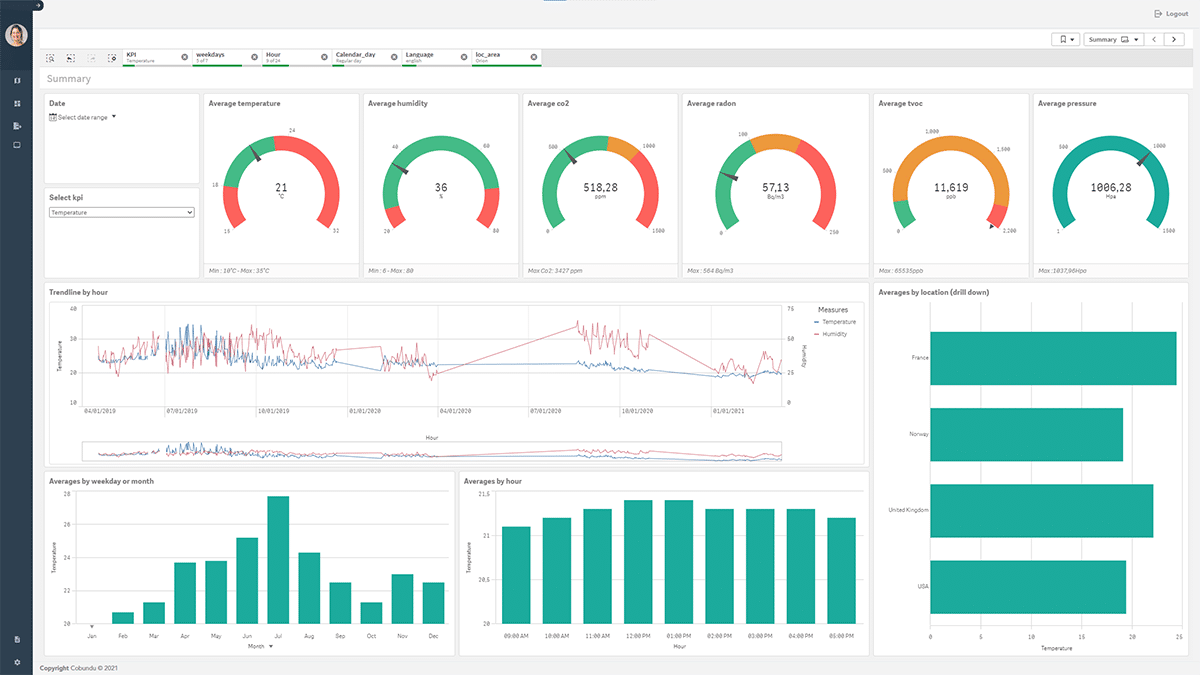The implementation of an agile workspace is a crucial step for companies that want to provide more flexibility and comfort to their employees. By creating an agile environment, they seek to encourage collaboration within their teams, improve employee productivity and foster long-term engagement.
More advanced than the flexible office, the agile space, therefore, requires more preparation before being implemented. You will also need to use software solutions that are developed for such environments.
What is an agile workspace?
Definition of an agile workspace
An agile workspace is a modern workplace designed for flexible, activity-based working, supported by mobile digital tools. Its goal is to provide employees with the ability to work in the way they prefer At any time and in any place. In practice, employees are no longer tethered to individually assigned desks or dedicated spaces. Desk and resource sharing becomes the norm. The agile work environment typically includes sitting and standing workstations, soft seating areas, meeting and huddle rooms, and outdoor workspaces.
The benefits of an agile work environment
An agile space has multiple benefits for employees and managers of a company:
- More freedom in the way people choose to work
- Improved collaboration within and across teams
- Increasing trust, transparency and openness
- Greater satisfaction and better work-life balance
- Happier employees are also more engaged employees
- A wider talent pool to recruit from and better retention of employees
- Space and cost savings and a smaller carbon footprint

Some examples of agile workspaces
Depending on the nature of the business, corporate objectives and resources, a company can set up different types of spaces that together make up an agile workspace. These can be grouped into five main categories:
- Concentration spaces
These are quiet spaces that allow you to concentrate on complex tasks. You can isolate yourself to better think, or to make phone calls. Especially for introverts, who are more sensitive to external stimuli, they also offer the opportunity to escape the stress or distraction of open spaces. - Open spaces
An open-plan layout eliminates partitions so that employees are not closed off in cubicles or offices. Often occupying a large portion of the office, open spaces allow employees to interact with each other more easily and more often. They are intended to provide an environment that is essential for creativity, such as for team projects. - Resource spaces
These areas concentrate all the tools needed to perform certain tasks: printers, scanners, office equipment… Their function is to avoid that these tasks disturb the other collaborators during their work. - Relaxation areas
These are shared spaces in which people can take a break away from their desks and recharge their batteries. They are intended for socializing and informal discussions between colleagues. They encourage exchanges between different departments and relationships within the company, and can also be used for improvised meetings.

- Touchdown spaces
These are typically laptop-centric spaces, offering adequate internet access for short-duration work. They can be used to quickly plug in a computer or recharge a cell phone, for example. Or to respond to an email or call in between meetings.
What is the difference between a flexible office and an agile workspace?
If the concepts of flexible office (or flex office) and agile workspace are relatively close, the notion of agile space goes further. Indeed, it is not only based on shared spaces and flexible seating arrangements but adopts a long-term vision to optimize the well-being of employees. Its implementation is therefore more complex.
Read also: 5 Ways Workplace Analytics Make the Hybrid Office Work Better
A common vision: open workspaces
In both cases, open spaces make up the bulk of the workplace. Here, users can interact without physical barriers between them, hierarchical boundaries are erased in favor of better collaboration and transparency.
Differences in vision
But where the flexible office stops in the search for adaptation to needs, the agile workspace focuses on user demands to meet them in a personalized way. In other words, it focuses on building a truly agile culture that allows for more personalized solutions around user needs. Giving people control over their space, pace, and place of work This requires analysis and a clear understanding of employee workstyles so that the spaces are set up to support everyone.
Read also: Optimizing Office Space Configuration – Aligning Supply and Demand
How to set up an agile environment supported by digital technology
Data and its analysis play a major role in setting up an agile workspace. That’s why using a software platform like Spacewell Workplace Analytics is very beneficial. It can support you in this process in five ways.
Redefine the office based on business outcomes
In a world of flexible use, the office should be viewed as a high-performance tool for employee well-being, engagement, and productivity. Optimizing this environment should therefore be the priority of every company. Yet, studies like the Leesman Index show that only 57% of employees feel that their workplace allows them to work productively. And this, despite the fact that employees are a business’s greatest expense (on average 90% of operation costs go to payroll) and most valuable asset.
Gather information on space usage and ambient conditions
With the Workplace Analytics platform, you can collect and leverage detailed data from sensors to get an accurate picture of how different spaces are used throughout the day and the level of service and comfort provided to their users. This is an essential step in building a healthy, human-centered workplace.

For example, by tracking indoor air quality in different spaces, facility managers can identify problematic spaces or areas with too high a risk of transmitting viruses and diseases.
Read also: Embracing Flexibility: Technology to Support Hybrid work Workplaces
Optimize space and make the right decisions
By tracking occupancy and utilization rates of various spaces, corporate real estate departments can identify if they are underutilized or, conversely, overused. This allows them to easily adjust space supply to employee needs and avoid unnecessary real estate costs by offloading or subletting unnecessary space.
Increase transparency with a real-time overview of office usage
Using an analytics and experience platform, sensor data can be overlaid on floor plans and then provided to building users through their smartphones. This allows them to view space usage in real time and find and reserve the right spaces for the tasks they want to perform.

Provide activity-based services
For a work environment to be truly agile, flexibility must also apply to the services provided. Services should no longer be governed by fixed schedules but should be activity-based, allowing efforts to be focused where they matter most, based on actual space usage.
With the Spacewell solution, cleaning, maintenance, and service teams can receive instructions about where tasks need to be performed, based on the analysis of usage data. This improves the quality of services provided and relieves these teams of unnecessary tasks such as cleaning spaces that have not been used.
To sum up
Today, companies must not only adapt to new hybrid ways of working, but must be proactive in offering their employees flexible and agile workspaces. Only then will they ensure maximum engagement and productivity.
Spacewell Workplace IoT-connected software is a great choice to create an agile work environment, offering solutions tailored to the needs of each organization.






